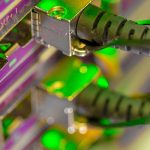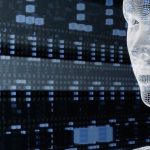Put a bunch of qubits together, and you get quantum computing, but it’s more than just a building housing one of these machines. Andrew Lord, who leads research on optical and quantum networks at BT Group, points out there are still questions about how to structure and connect quantum computers in a data center.
A data center’s main job is to provide connectivity—linking people, resources, and compute power. Integrating quantum computing into this mix could help tackle specific challenges, but a lot remains unclear. Emilio Hugues-Salas, another expert at BT, is focused on long-term issues surrounding quantum data centers. He explains it might take five to ten years to crack the complex physics that differentiate qubits from the classic binary bits in computing, even though advances are happening quickly.
A qubit acts like a bit in classical computing but exists in a two-state quantum system. When you look at it, electrons can spin either up or down, alongside specific probabilities. Hugues-Salas suggests that defining the requirements and architecture of a quantum data center means figuring out how to securely access quantum computing alongside traditional GPUs.
Lord remarks that it’s like the early days of the internet: we need to make quantum accessible so that we can see its potential—whether that’s developing new drugs or modeling photosynthesis. In energy-intensive fields, just one significant breakthrough could justify the effort, especially since current technologies are costly. As Lord puts it, optimizing energy consumption at BT is tough and time-consuming. Sometimes, you only need access to a quantum computer for mere seconds to make it happen.
BT is also exploring quantum networking, including testing quantum connections in standard Equinix data centers in London. This project aims for secure cloud data access, allowing customers to carry out operations securely.
Owen Rogers from Uptime Intelligence uses an analogy to explain quantum computing’s parallel problem-solving abilities, comparing it to unlocking a padlock with a magnet. However, quantum algorithms come with their own challenges—they demand specialized skills and have technical hurdles to overcome. More qubits mean more noise, making it crucial to control individual particles in a cooled environment. Removing interference is essential for a functional data center.
Research in quantum computing is expensive and often unsuccessful, but if it works, the potential rewards can be massive. A team could solve problems previously deemed impossible. But reaching a certain qubit level might generate so much noise that increasing their number ceases to be beneficial.
In the UK, initiatives like the Integrated Quantum Networks hub at Heriot-Watt University aim to build a “quantum internet,” connecting quantum computers to push the limits of computing power. Another project, the QCI3 hub at Oxford University, spots opportunities in quantum machine learning and the expected $1.3 trillion market by 2030.
Dominik Andrzejczuk, CEO at QDC.ai, invests in two Oxford quantum hardware companies and agrees engineering challenges take time to resolve. However, ion-trap architectures are promising for scaling. Andrzejczuk notes that while quantum computing and AI are both revolutionary, they approach problems very differently; quantum will need more investment to realize its gains.
Jerry Chow from IBM emphasizes that we’re in the early stages, more akin to physics experiments than fully-fledged applications. IBM runs quantum systems with 100 qubits or more and focuses on creating utility-scale quantum systems. Their Quantum Network spans around 250 partners globally, aiming for breakthroughs with a long-term plan extending to 2033.
Quantum computing operates differently than classical methods, requiring a mix of QPUs, GPUs, and CPUs to manage workloads. IBM’s data centers offer trial access for users to explore quantum computing’s potential, with plans to encourage scientific exploration and practical applications that deliver speed and accuracy.









